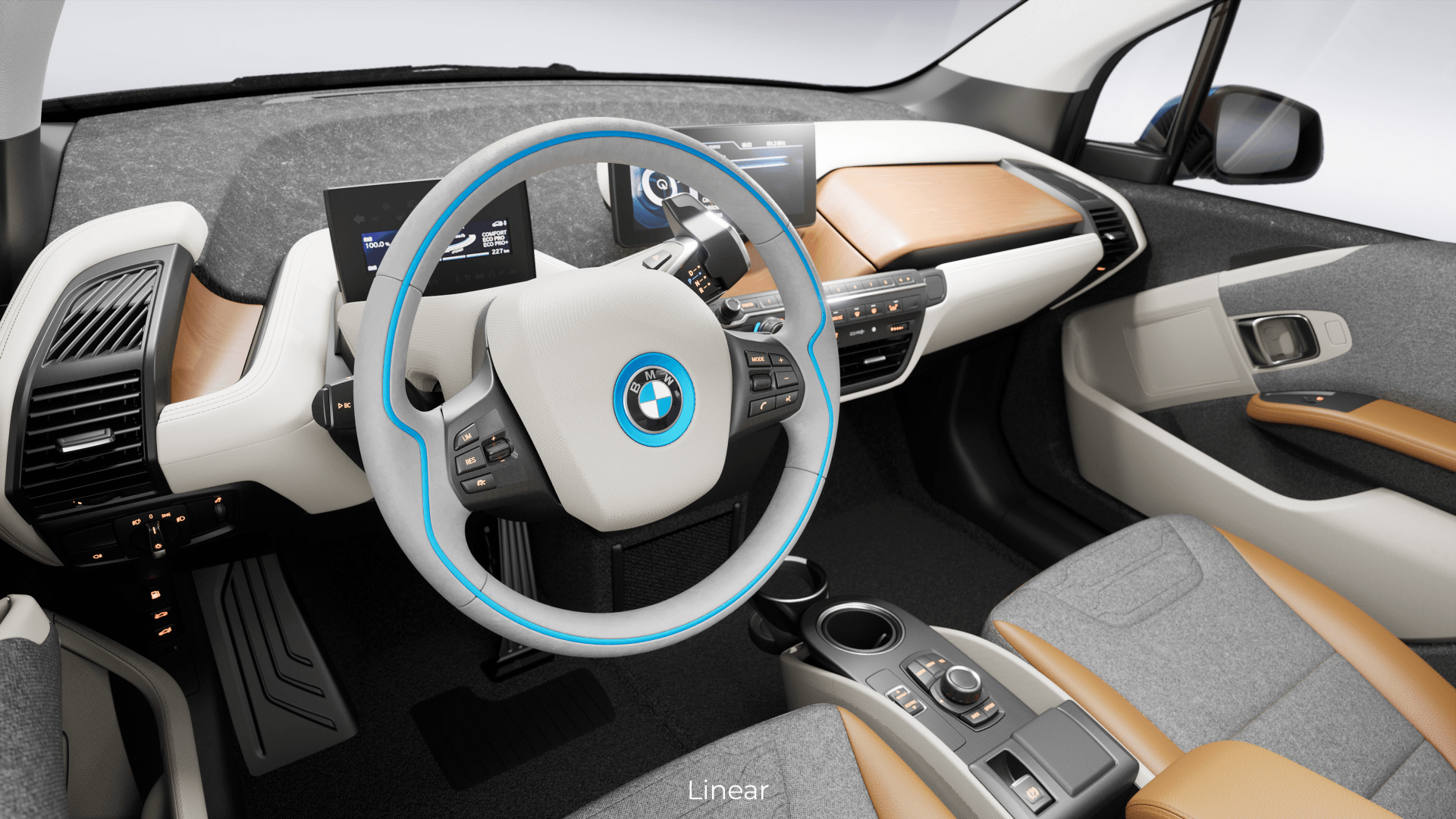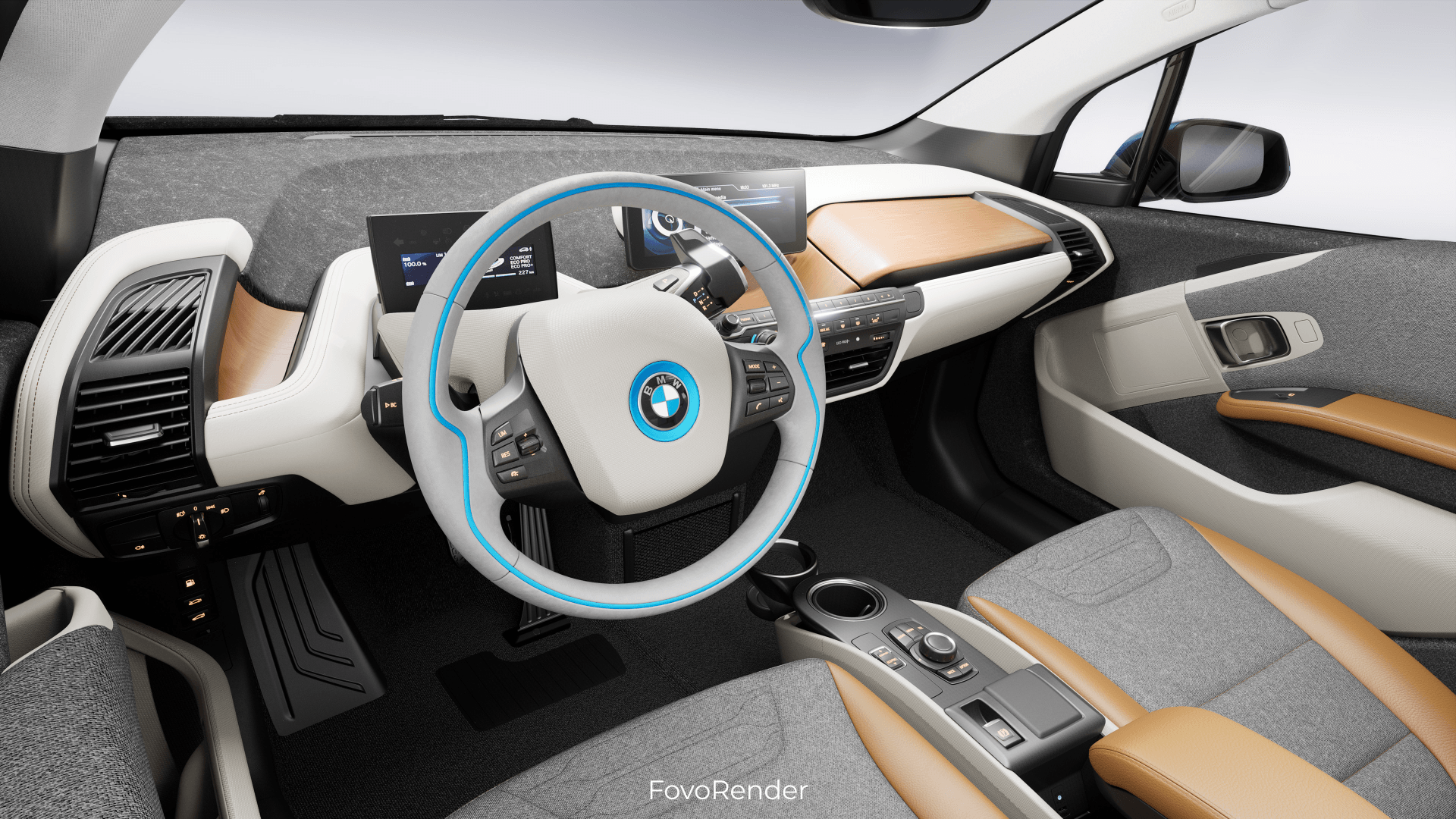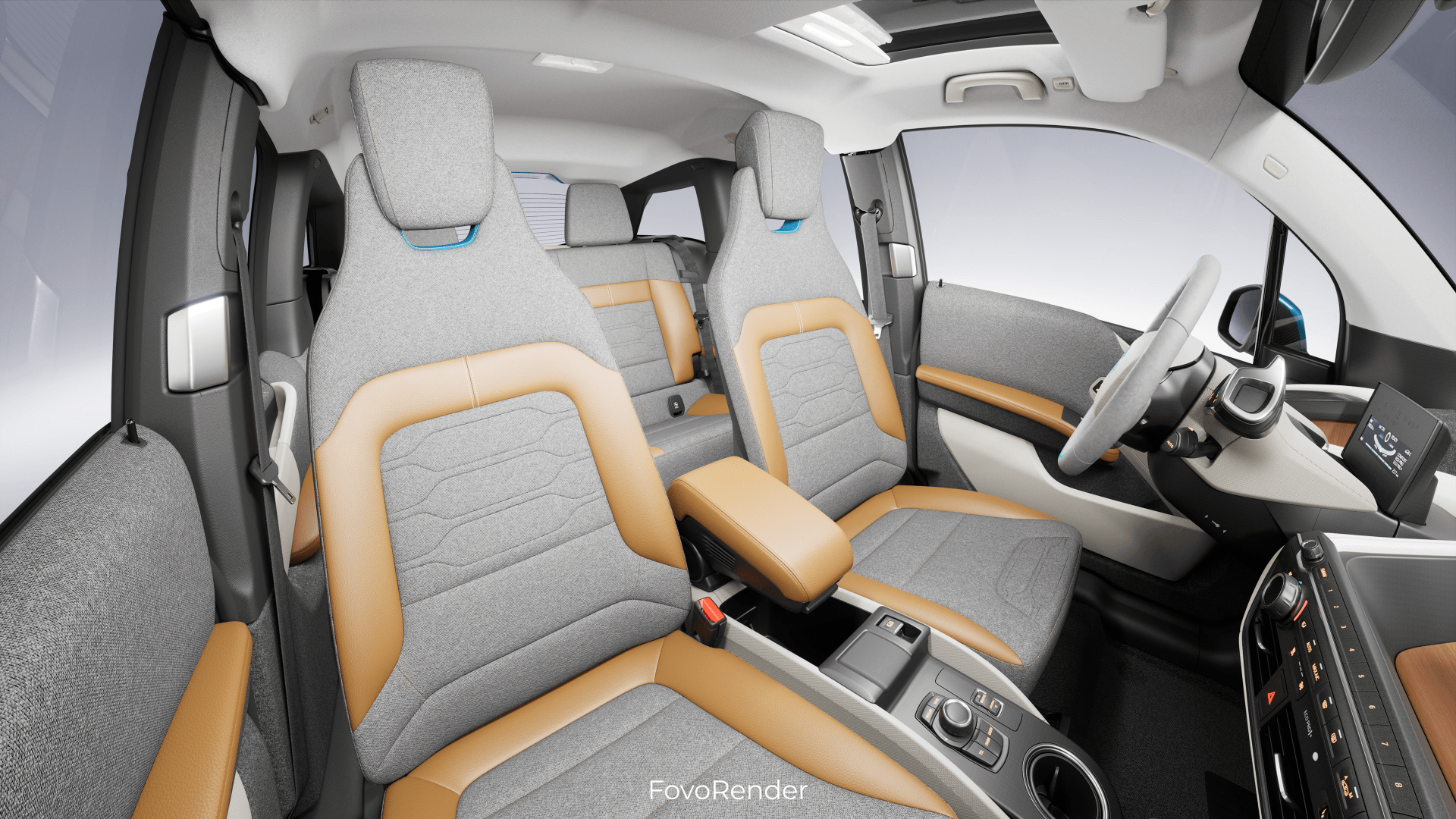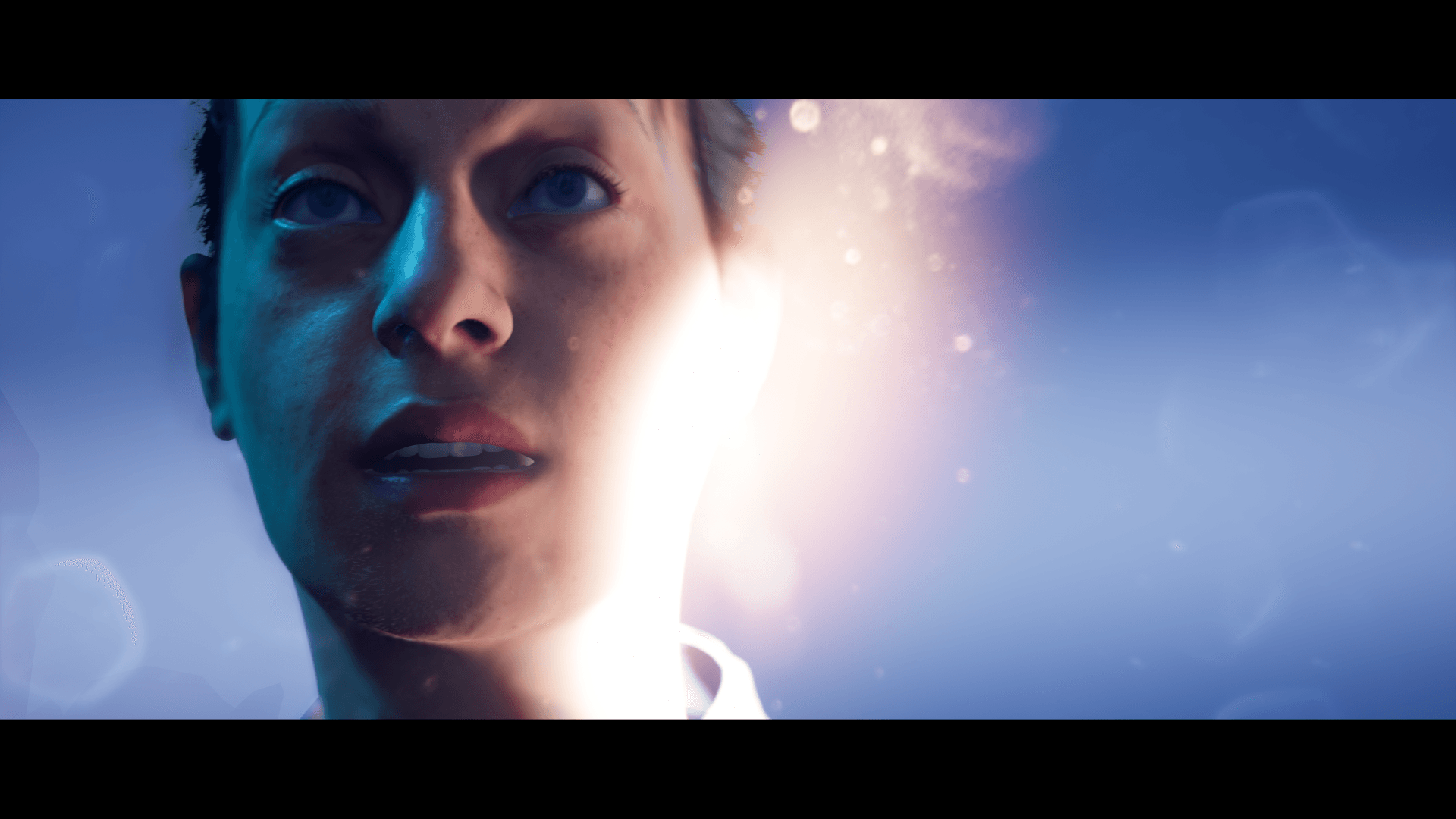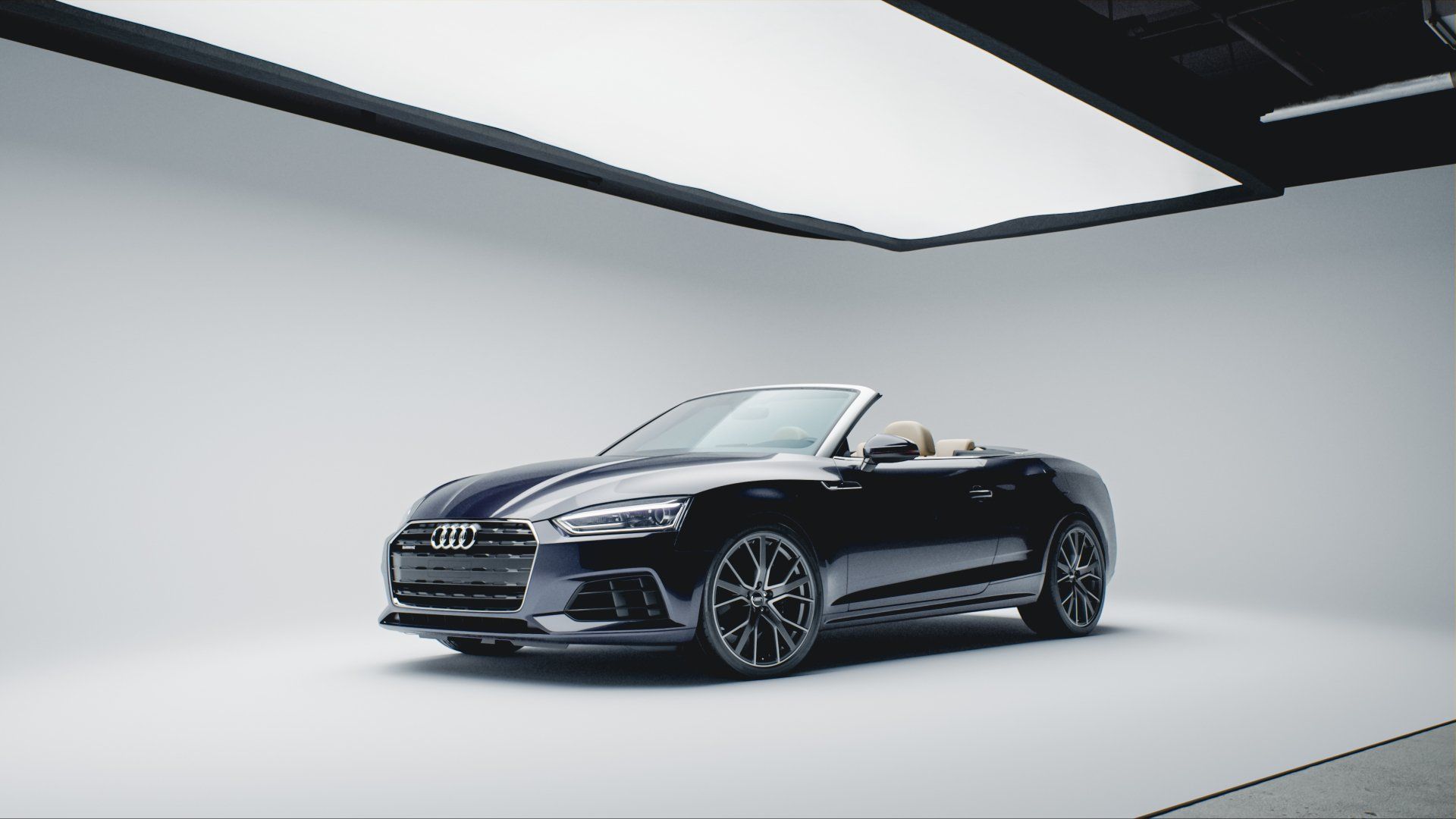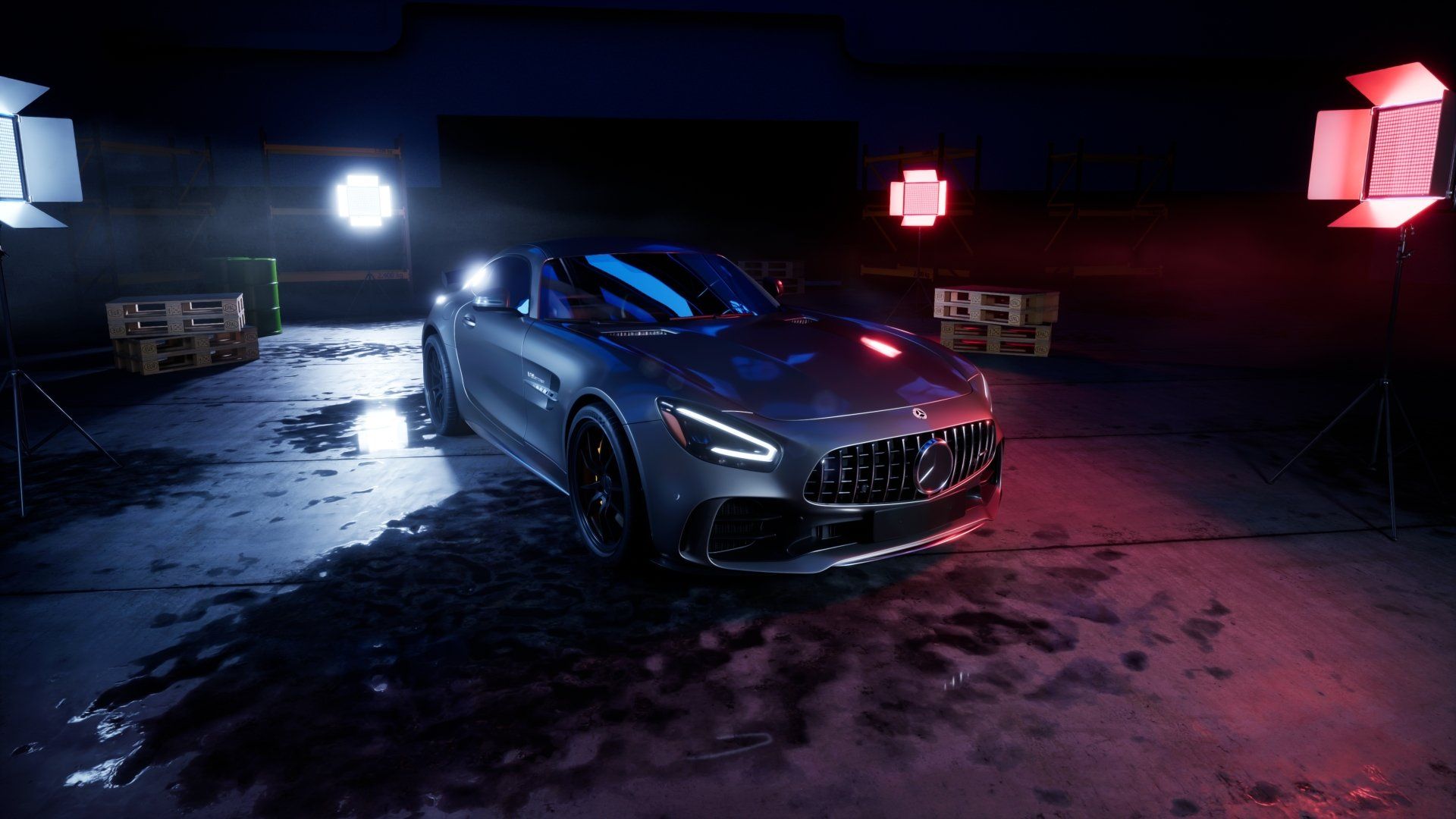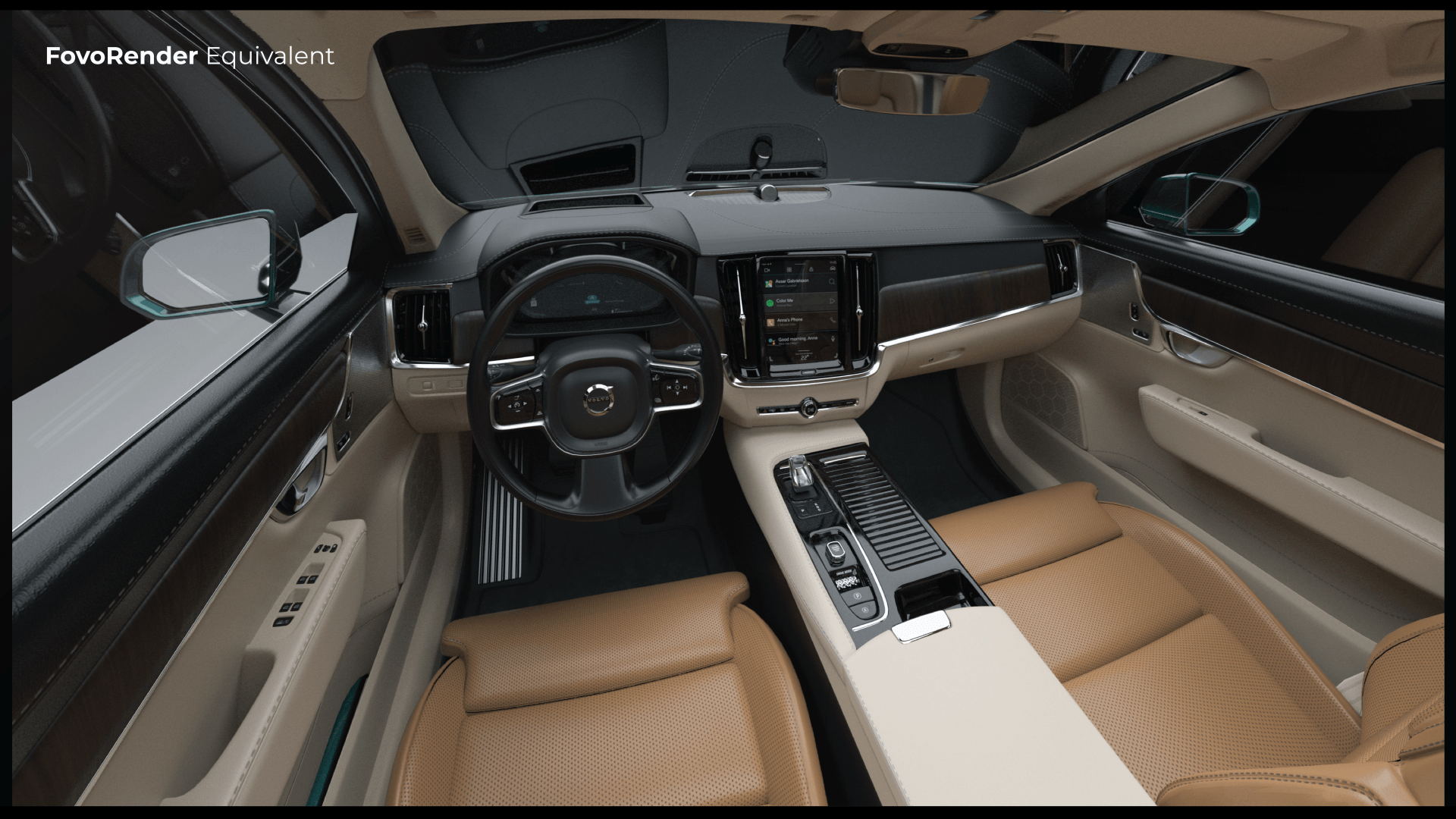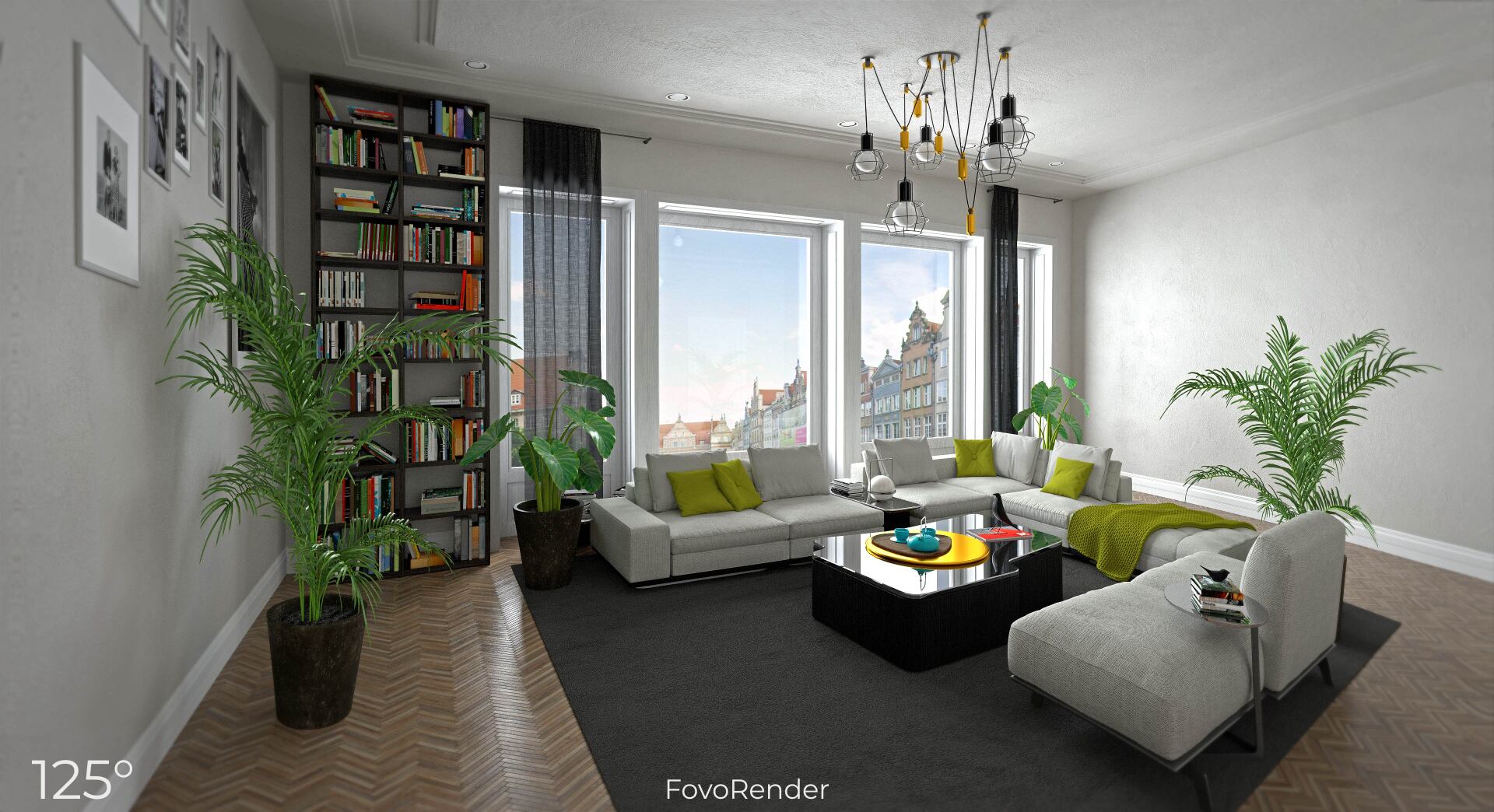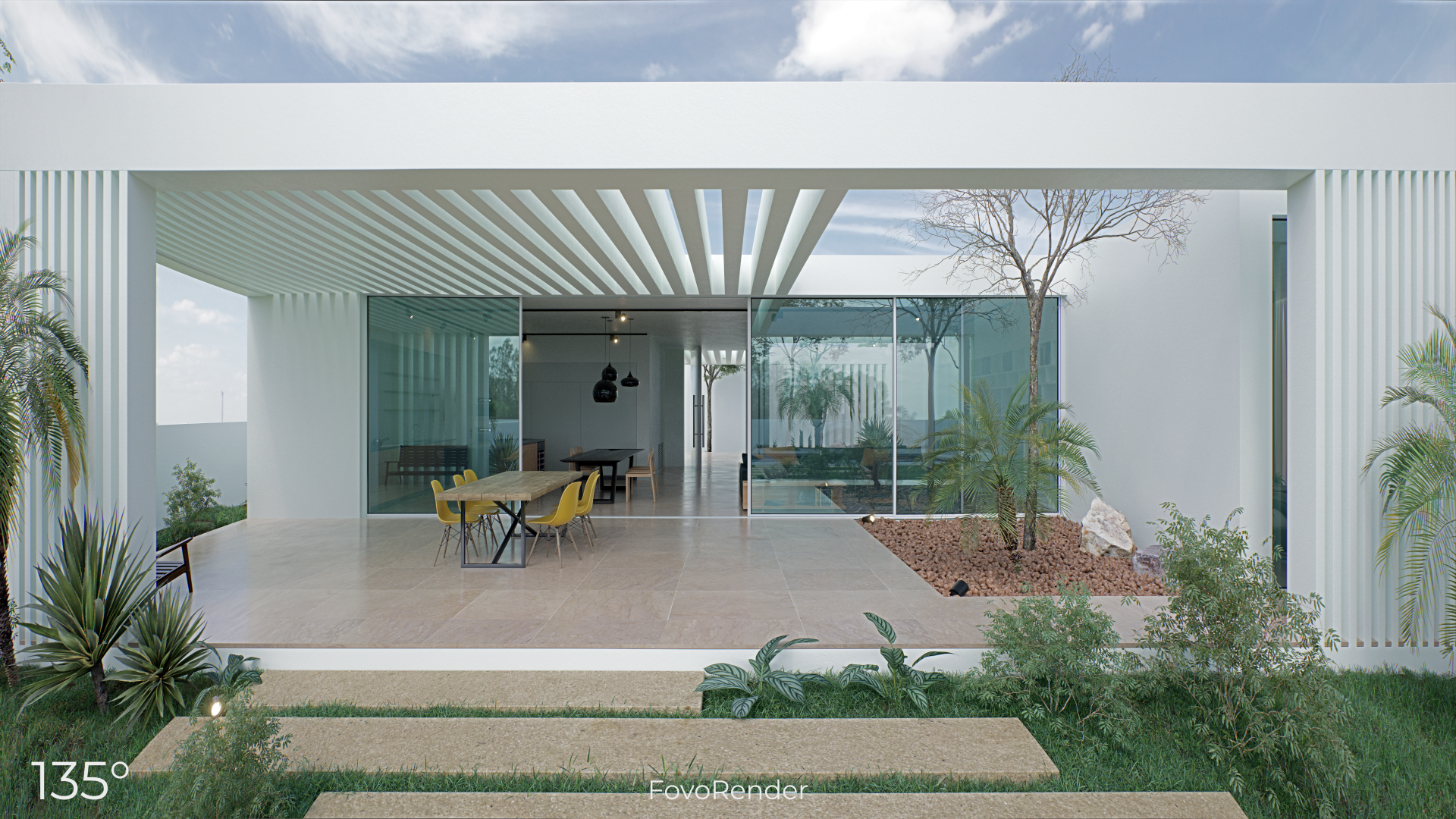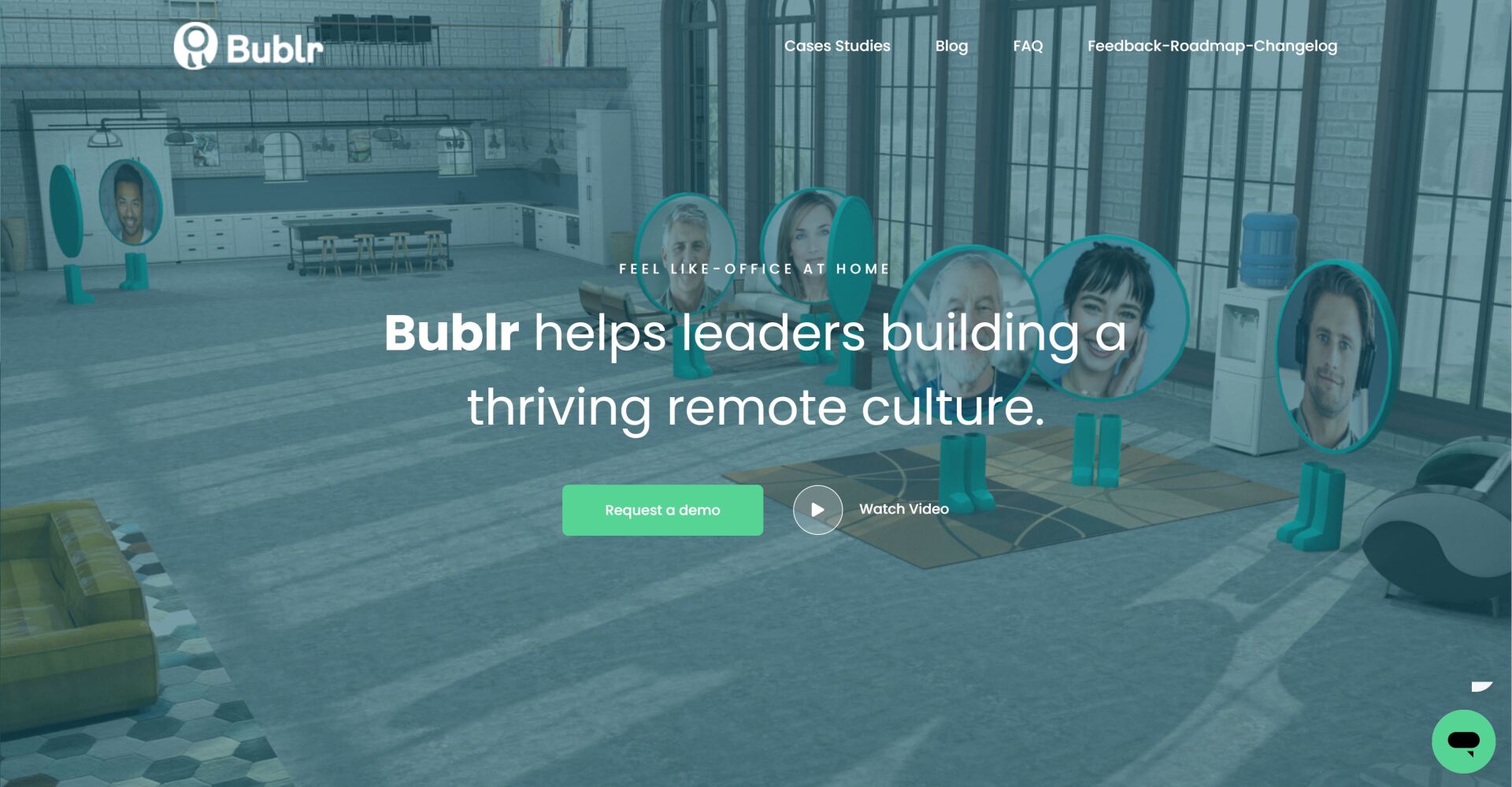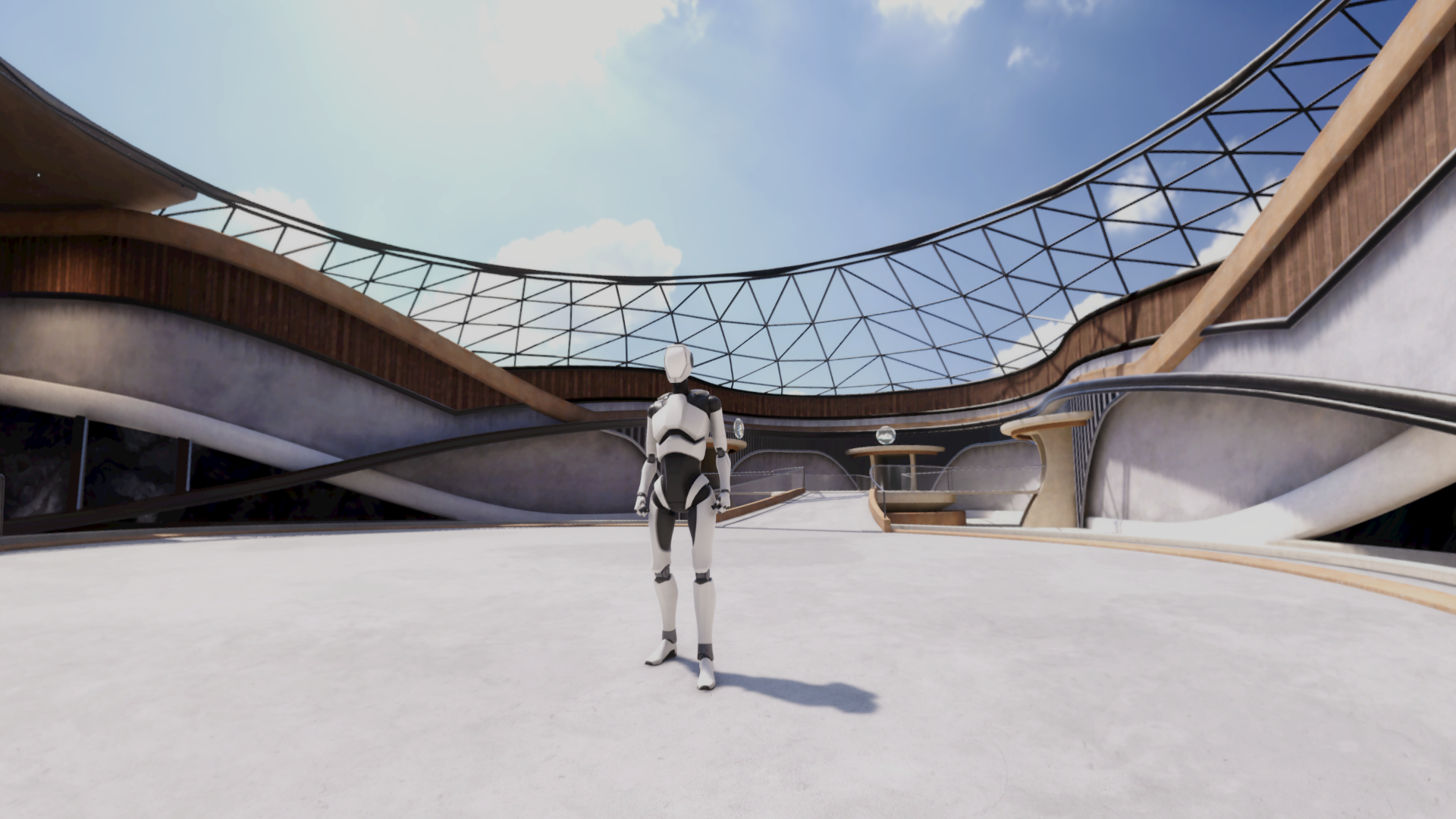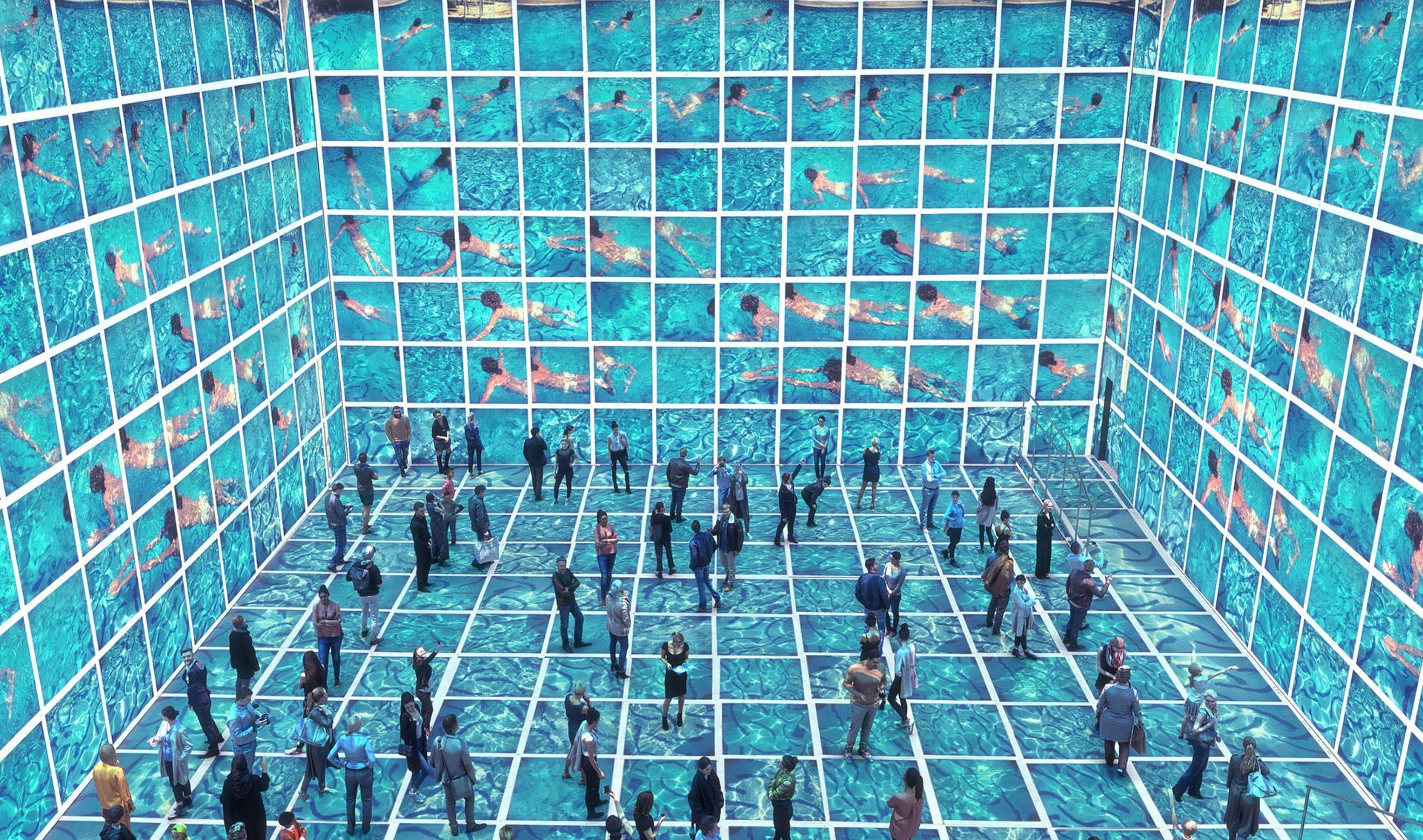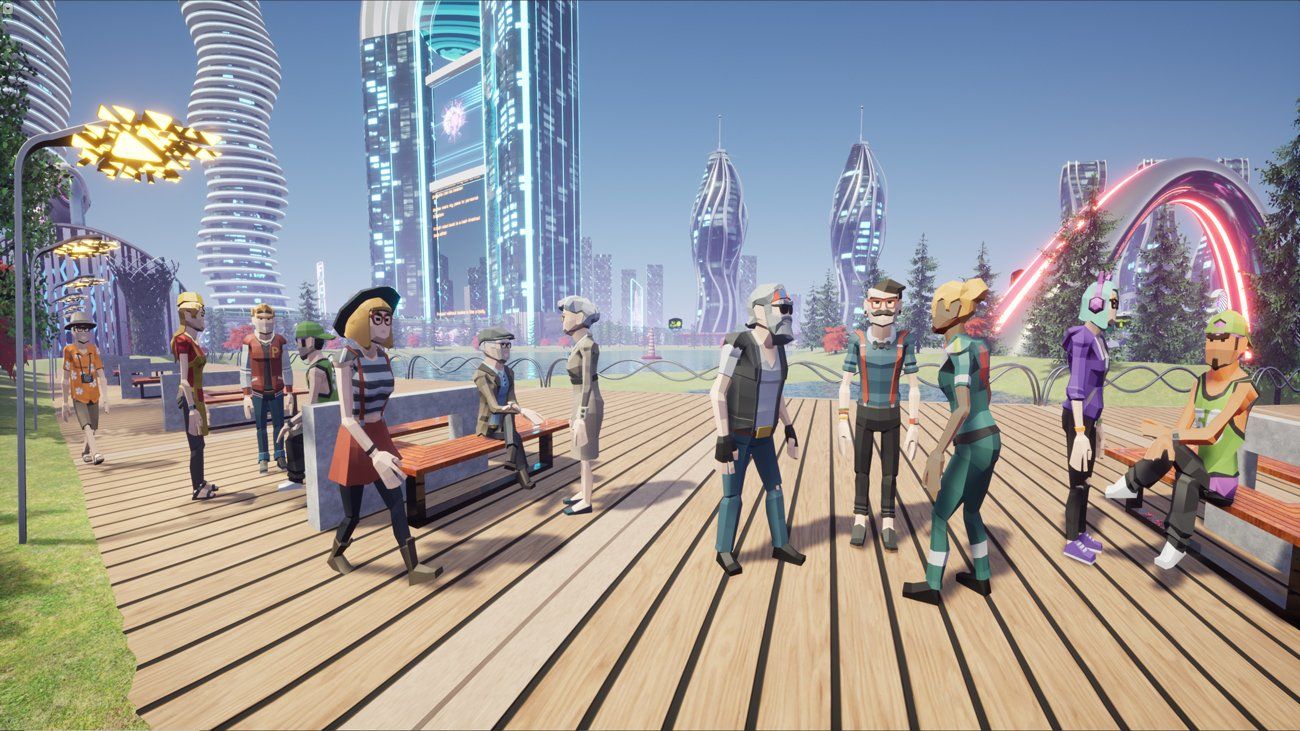Fovotec team up with 3D visualisation agency CreateCG to make never-before-seen shots of a BMW i3 interior
Ben Walker is a seasoned professional in the automotive visualisation industry. Having spent several years as Head of Real-Time Imaging at the Burrows agency working for clients such as Ford, McLaren and VW, he set up his own agency CreateCG in 2020, just as the pandemic was beginning to bite. Fortunately business has been brisk since. CreateCG have benefited, like many other agencies, from the general upswing in demand for virtual content in recent times.
A few months ago Ben produced some beautiful architectural renders with the Unreal Engine 4.25 version of FovoRender that we showcased on our blog. And so when we got the new path-tracing version working recently we were keen to see how he might use it for high-end automotive visualisation.
Automotive visualisation presents some unique challenges for 3D artists, particularly when it comes to interior shots. The spaces are almost always tight, and it’s very difficult to move the virtual camera without cutting into windows, columns or headrests.
As a result, the ‘heights and angles’ options for camera position are limited. So creative teams involved in the production of car interiors tend to rely on a few tried and trusted setups that use narrow fields of view or long lenses. These can be great for showing off the details of instruments and trim but less good for capturing the overall feel of the cockpit.
We sent Ben a copy of the FovoRender path-tracer running in
Unreal 4.27 and let him experiment for a few days. Then we met up and asked him how he got on. One of the things that Ben noticed immediately about applying FovoRender to make shots of a BMW i3 was the freedom it gave him to render more of the car’s interior at once.
“Straight away you get a huge sense of space using FovoRender. You can get a lovely shot with lots in the frame that looks great; it’s a much more natural image”
A very common setup in autoviz is the view of the steering wheel and dashboard area from the driver’s side. Getting a generous volume of space in a shot like this without deforming the internal structure is a classic problem. In a typical workflow, the artist might start with a linear perspective lens equivalent to a camera lens of around 18 mm, which produces a shot like this:
Nice as this shot is, Ben felt the lens was causing the steering wheel to bulge out towards the viewer too much, creating an unnatural and distorted feel. Using the spatial adjustment tools built into FovoRender, he was able to ‘push’ the central space back, so making the space feel more comfortable and less bulged, like this:
One of the really interesting things about working on these images with a person as experienced as Ben was that he used the FovoRender tools in ways we hadn’t expected. We assumed that artists would start with the narrow fields of view that 3D engines like UE4 provide by default and then try and widen them as much as possible, using FovoRender to increase naturalism along the way.
Ben surprised us by working the other way round. As with the shot above, he often began with the narrower field of view, as expected, but then used the FovoRender tools to correct the unnatural appearances they produced without needing to widen. This was a reminder to us that even relatively low fields of view can produce spatial artefacts that don’t look quite ‘right’. But until now there’s been no way to fix them.
Another shot that often causes problems is the view through the passenger door. The aim here is to show off the trim of the seats and to emulate the experience of someone entering the car from the front. It’s often hard though to avoid clipping the door or column with the camera when your camera is this close. Removing chunks from the car is a time-consuming option. Setting up such a shot with the standard lenses in UE4 produces this:
Here the deformation of the passenger seat is probably too severe to make this shot usable. However, by applying the adjustment tools in FovoRender Ben was able to produce this version without moving the camera at all:
This is the same setup, from the same camera position as before, but modified using FovoRender. Ben felt this shot was a big improvement over the standard linear perspective version. Note how less stretched the passenger seat is, and how much more interior space is shown.
Again, you can see a far greater volume of space and a much more natural composition of the interior compared to the standard shot.
“You can see more, objects are straighter and less distorted and it’s great that you can fine tune the details”
We really enjoyed working with Ben on these renders and we learnt a lot in the process. We think the renders he produced, which have never been possible to produce before at this quality with these compositions, show why FovoRender could become an indispensable tool for 3D artists and creative directors who want more freedom and control over the images they create.
FovoRender is a patent-protected technology from Fovotec Ltd.
